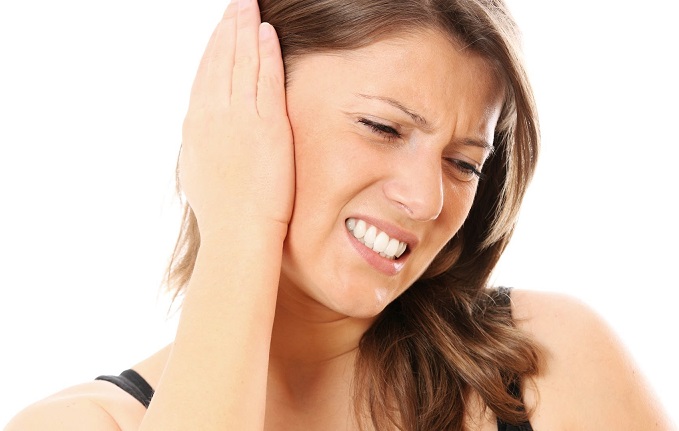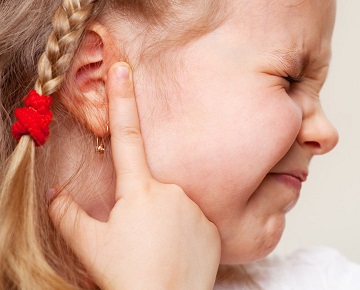It is not uncommon for your ears to "pop" during a flight. This is caused by a build-up of pressure inside of the cabin as the plane ascends and descends. Although some people may find it irritating, having your ears pop isn't anything to worry about. However, some people may wonder if it is safe to travel with an ear infection.
Is Flying with Ear Infection Safe?

It is usually recommended that you don't fly if you have an ear infection. With an ear infection, the Eustachian tubes become clogged with fluid and the pressure inside of the plane's cabin can cause severe pain in your ears. In addition, along with the pain, the eardrums can be damaged during a flight.
The Eustachian tubes are located at the back of the eardrum and run to the back of the throat. Normally, the tubes are clear and allow for air pressure to be equalized on both sides of the eardrums. However, if you do have an ear infection, fluid can build-up in the tubes and clog them, which doesn't allow the pressure to equalize.
Possible Effects of Flying with Ear Infection
If you do fly with an ear infection or if your Eustachian tubes are clogged, you may experience some unusual symptoms. While the most common symptom will be severe pain due to the pressure changes in the cabin, you may also experience vertigo. Vertigo usually makes you feel dizzy and you may feel nauseous and vomit.
Another symptom you may experience during a flight is tinnitus, which is a ringing in the ears. Tinnitus can also cause a temporary loss of hearing. Due to the pressure placed on the ears during a flight, it is possible that the tympanic membranes, or the eardrums, may rupture if your Eustachian tubes are severely clogged.
Sometimes chewing gum, yawning and swallowing will help ease the pressure on the ears during a flight. However, if you have an ear or sinus infection, these tricks may not help ease the pain or pressure you may experience.
If Flying Is Unavoidable, What Can Be Done?
For people who fly frequently for business or are in the travel industry, flying with ear infection may be unavoidable. However, they may be able to avoid pain and complications by taking an over-the-counter decongestant or with frequent swallowing.
1. Take OTC Decongestant
If you have a mild ear infection, taking a decongestant may help you get through a flight. Many decongestants come in form of a capsule to be taken orally or you can also find decongestants in a liquid form, which is applied in the nose with a dropper or sprayed.
A decongestant can be taken before or during a flight, but to get the best results, it should be taken the day and evening before. This allows the inflammation in the sinuses and ear canal to ease, which can help reduce pain. If you have a severe ear infection, it is best to seek medical attention before flying.
2. Swallow Frequently
Swallowing can also help reduce the discomfort of an ear infection during a flight. Many people will chew gum or suck on a piece of hard candy. This helps to produce extra saliva in the mouth, which leads to more frequent swallowing and helps to ease some pressure in the ears.
3. Popping Your Ears
"Popping" your ears may also help prevent pain by helping to unblock the ears so the air pressure can be equalized in them. To pop them, pinch your nose and close your mouth. After directing the air in your mouth to the back of your throat, gently blow to help increase the pressure in your ears. You should feel or hear a "pop," which means your ears have cleared. You may need to "pop" your ears again during the plane's descent.
4. Try Pressure-Regulating Earplug
If you haven't had any success with these methods, you may want to try buying a pair of earplugs that will help regulate the pressure when flying with ear infection. Earplugs can be bought in pharmacies or at airport gift shops and worn during the plane's ascent and descent.
What If It Is My Kid, How Can I Help?
 If possible, infants who have an ear infection should not fly and you should postpone the flight for a few days. This will give the antibiotic they were prescribed a chance to work to clear the infection and unclog their ears. However, if you cannot avoid flying, you should consult with your child's pediatrician.
If possible, infants who have an ear infection should not fly and you should postpone the flight for a few days. This will give the antibiotic they were prescribed a chance to work to clear the infection and unclog their ears. However, if you cannot avoid flying, you should consult with your child's pediatrician.
1. Nasal Decongestant
Children over the age of two can be given a nasal decongestant with the approval of a pediatrician. The medication should be given to them about one hour before flying or about an hour before landing. However, this preventative isn't guaranteed to work for your child. For children under two years old, decongestants are no longer recommended by the American Academy of Pediatrics.
2. Saline Nasal Spray
As the air inside of the cabin is usually dry, you may wish to use a saline nasal spray to help combat the dry humidity. A saline spray can be given to children of any age, including infants. In addition, make sure they are hydrated by having older children drink water or juice instead of carbonated beverages and nursing or feeding infants before or during the flight.
3. Breast or Bottle-Feeding
In addition to keeping them hydrated, breast or bottle-feeding during take-offs or landings will also help when flying with ear infection because it encourages babies to swallow. Bottle-feeding may be best as it is safer to keep infants in their car seat during a flight. A pacifier doesn't help as much because it doesn't allow for beneficial swallowing. Older children can be given a juice box or a cup from which to sip. Squeeze a little of the juice into the straw so as they suck on it, the action will help clear their ears.
4. WARNING
If ear pain does not ease soon after landing, you should consult with your pediatrician. Although not all ear pain is due to an ear infection, infants and young children can get middle ear infections after a flight. An infection is caused because fluid is clogging the middle ear and being exposed to germs.
